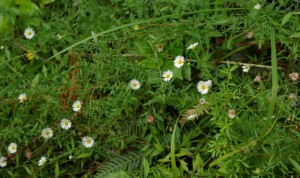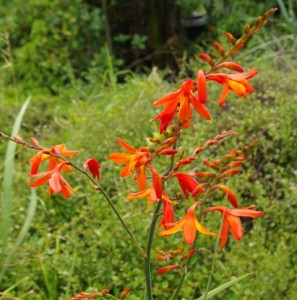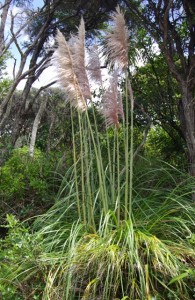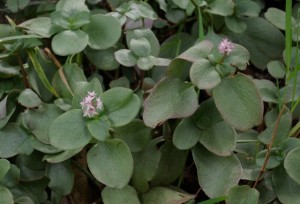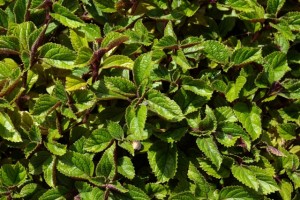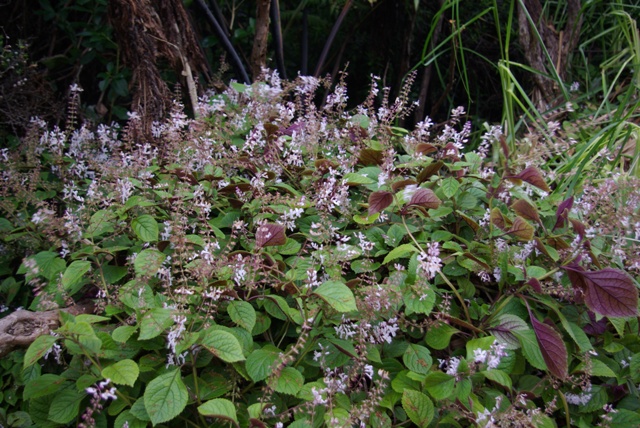Mexican daisy
Erigeron karvinskianus
Mexican daisy is a Surveillance Pest Plant in the Regional Pest Management Strategy. This means they are banned for propagation, sale and distribution. It is also on the National Pest Plant Accord. If you have any on your property, please get rid of it especially if you are near native forest.
This pretty little groundcover has small green-red leaves and the small flowers, which cover the plant in profusion are white and pink with yellow centres.
It was once a garden plant, like so many weeds. It can form a dense mat of ground cover, smothering native vegetation, and will grow in sun or moderate shade.
There is an infestation near the beginning of the Nikau Glade Track, and on my last visit, I noticed it had spread futher into the forest, colonising an area beside the Wekatahi Stream. It is a prolific seeder and the seeds are spread a long way by wind.
Mexican Daisy can be pulled out by hand, and it can be sprayed with Glyphosate-based sprays.
Montbretia
Crocosmia x crocosmiflora
Montbretia is a Surveillance Pest Plant in the Regional Pest Management Strategy which means is cannot be propagated, sold or distributed.
It is a bright red perennial with stiff green leaves that grows from a bulb. It grows into large clumps on roadsides, forest margins, stream sides and cleared areas. It is widely found throughout Piha. It displaces natives in those areas.
Montbretia can be dug out and the bulbs disposed of safely to a landfill. Big infestations can be treated by spraying after flowering with glyphosate (100 ml to 10 ltires) but you will need to have more than one go.
Pampas
Cortaderia selloana and C. jubata
Pampas is a Surveillance Pest Plan in the Regional Pest Management Strategy. This means it is banned from propagation, sale, and distribution.
The heads of pampas are visible all over Piha in the late summer and autumn, with particularly thick infestations in some areas. A single head of pampas can produce as many as 100,000 seeds, so these South American imports (introduced in the 19th century as stock food) are particularly efficient colonisers. They like open areas, such as road sides, tracks, coastal hills, sand dunes and wetlands.
Pampas plants quickly grow into dense clumps, a tangle of dried leaves at the base, topped by razor-edged green leaves. The thick clumps prevent natives coming away and the tinder dry leaves are a fire risk. During the fire up the above Piha Road in February 1999, you could see the role the pampas played in fuelling the fire, as the dry bushes burst into flames, scattering sparks. Pampas also provide havens for pests like possums, rats and rabbits.
It is important when eradicating pampas to distinguish it from the native toetoe. The Auckland Regional Council has eliminated pampas from the Camel Rock so you can be sure that what you are looking at there is the native toetoe.The main way of spotting the difference is the flowering period.Toetoe flowers earlier than pampas, from October to January. Pampas flowers late January to May. Pampas is either purple-pink or white, while toetoe is cream-yellow. Pampas tends to stand erect while toetoe generally droops. The leaves are different too. Toetoe have distinctive secondary veins between the mid-rib and the margins of the leaves and when toetoe leaves die, they hang straight down, whereas pampas tend to spiral. Native toetoe is waxy at the base of the stem so you can do a touch check on plants.
There are a number of methods of getting rid of pampas. Very small plants can usually be pulled out by hand. Larger plants can be sprayed when they are not in flower, particularly after flowering. Roundup is effective but can kill natives such as manuka. One way to avoid this is to give a 5 second burst with the spray nozzle right in the middle of the plant. Gallant is a more expensive spray, but it is selective to monocotyledons (grasses) so does not harm broadleaf natives. It is best to do a trial run before spraying a big area, and always read the label on sprays before proceeding.
You can attack pampas with a slasher, but this is hard work as it you will get ripped by leaves as you reach into the base of the plant. Be sure to wear protective clothing and gloves. Any regrowth can be sprayed. To help stop spread, you can cut the flower heads off low down. Always dispose of the heads with care as you could spread millions of pampas babies.
Where pampas is serving a useful purpose, like holding a bank together, you could replant with flax, native toetoe, coprosmas or rengarenga lillies. All of these plants are easily grown from locally collected seed, gathered in mid to late summer.
Pitted Crassula
Crassula multicava
A creeping succulent herb with facing leaves that are covered with small dots or pits. The flowers are pale pink and are born in clusters of stems. Small plants develop in these clusters after flowering.
This plant spreads easily from even small pieces of stem, which would make hand removal a challenge. It can invade rocky areas such as cliffs. It will also grow in shade like the plants in the photo in Garden Road.
It smothers the ground creating a dense carpet that excludes native plants and renegeration of seedlings.
To control spray with 200 ml from 10 litre glyphosate (RoundUp) with 20ml per 10 lites penetrant (Pulse or similar). Always follow the instructions on the container.
It is a Surveillance Pest Plant which means it is banned from sale, propagation, distribution etc and land owners are encouraged to control on their properties. It is also on the National Pest Plant Accord. People often make the mistake this is an OK ground cover and spread it around their gardens.
Plectranthus
Plectranthus cilliatus
Another quite attractive-looking ground cover that people often mistakenly look after in their gardens and spread about. It looks a bit like the native parataniwha because they have a similar habit, tolerate shade well and have handsome purple undersides of leaves.
Plectranthus can be distinguished from parataniwha because it has rounder leaves compared to the long, flatter leaves of the native ground cover.
Plectranthus likes road edges, watercourses and can be found in many gardens where it can become quite dominant. It is a trailing groundcover with oval leaves, green above and purple underneath. It bears white flowers with small purple dots from December to August.
It forms a dense mat that excludes native growth.
It is a Surveillance Pest Plant which means it cannot be propagated, sold, or distributed and it is on the National Pest Plant Accord. You can weed-eat or rake up this weed and take to a weed bin. It is not compostable as it may continue to grow. It can be weed-wiped or sprayed with Glyphosate and penetrant. 100 ml Glyphosate to 10 litres water plus 20 ml penetrant to 10 litres water. Follow instructions on herbicide container.



